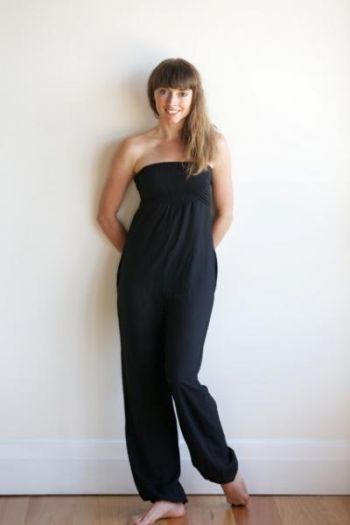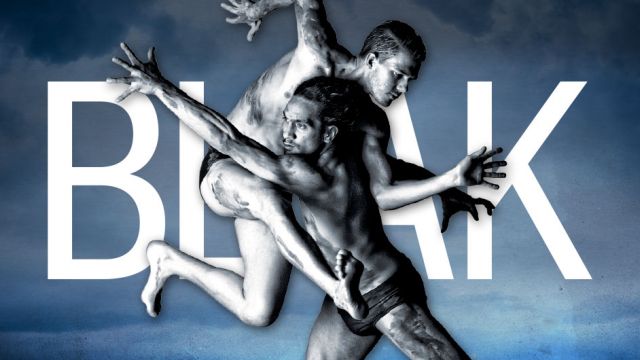Bangarra: Blak
Bangarra Dance Theatre premieres Blak, brand new work with stories about a contemporary clan and the collision of two worlds, playing at Arts Centre Melbourne from May 3 to 11. Following the Melbourne season, Blak will tour to Wollongong from May 17 to 18 before being presented at the Sydney Opera House from June 7 to 22. The production will then be presented in Canberra (July 11 to 13) and in Brisbane (July 18 to 27) for the final leg of the national tour.
Drawn from the artists’ urban perspectives, Blak tells the stories of contemporary Indigenous Australia in a work of dance theatre.
Dancer Yolande Brown speaks to Neil Litchfield.
Speaking to Yolande Brown, I discover that Bangarra's latest work Blak is structured into three sections. The first section, danced by the male members of the company, the second section by the women, while the entire company shares the stage in the third section.
The work, Yolande tells me, is partly informed by experiences on the company's tour of North East Arnhem Land earlier this year.
"It’s a reflection of Aunty Kathy Marika’s family and Djakapurra Munyarryun’s family up in Arnhem Land. Part of our research came from our remote tour to North East Arnhem Land. That’s how we started off the year, which was amazing. We went up and shared stories with the people, and a lot of the concepts we shared with the people up there informed the work that we’ve created. So some of the work is drawn from the traditional elements of being an indigenous person, as well as the contemporary elements of being a collection of modern urban-dwelling indigenous women that come from a whole collective background.
“We’re all so different in background. That’s what is interesting about our company – we’re so eclectic.
“The work draws from contemporary sets and materials as well, so there’s domestic materials on the stage that we relate to, and contemporary happenings in society that we talk about.

“We do touch on certain issues, like rekindling traditional language – that was something that we had to research. We were given the task of going back and finding our link to our own personal languages and trying to see if we could translate some poetry that we wrote, or some ideas, into our own Clan’s language. That was different for every one of us, because some of us are closely linked to our languages, but for some us it was more challenging, because some of our languages are listed as extinct on the internet, but are still spoken by a few elders – just linking into that was very challenging.”
How is that reflected in Blak?
“There’s one section that’s called ‘Native Tongue’, so we recorded some of our languages, and David Page and Paul Mac have worked collaboratively to create the music for the show. We all recorded some thoughts or concepts that we structured into our languages and David and Paul tweaked all our sounds and turned it into a modern electronic sort of a track, because our lives are quite contemporary.
“I found it quite difficult to get my language translated because the people that speak it are quite a long way away. I had to work with the internet to contact people overseas, who would then contact people back in Queensland.
“Those who were brought up in families that spoke the language didn’t have any problems, but others found it very frustrating – how difficult it is to emulate the sounds – they feel foreign in your mouth – completely different sounds. And trying to create the right speed, fluency and tonality. And how you feel when you’re listening to the words. The sensation – it’s so different when you’re listening to English, because it’s so familiar, but when you’re listening to something that’s completely different and trying to pick up all the nuances, that sensation of your ears becoming really alert, that translating into movement – the frustration and the way that your body moves, then exaggerating that into a dance language. It was a very interesting process.”
How does that translate into a dance vocabulary.
“I guess the dance motif evolved from the sensation of stories being pulled from mouths and ears – gestures became like a bed for our movement style to work with.
“Bangarra has it’s own movement style, like the Australian Ballet has it’s movement style. Over the last 23 years Bangarra has developed its own very unique and beautiful language style, then for each story that we tell we work out what are the key ideas we are exploring and how to make that into dance motifs and attitudes, then we meld that into what we do so well.”
Is there something in particular that Yolande learnt in Arnhem Land that touched her, that we will see in BLAK?
“I was really quite amazed by the poetry of the significance of water in our daily life.
“We were taken to a sacred creek on Djakapurra Munyarryun’s land, and before we stepped into the water, Djakapurra talked about how significant that area, and the water, is to him.
“Water carries the stories of everything that has gone before us, and carries the stories of everything we do now. The water is cleansing and it has cleansed everything that has come before us, and it resonates in all of our bodies. We’re 70% water, and that water that we were lying in had flowed across that river bed for thousands and thousands of years, and is a very significant part of his dreaming.
“We were told that if we lie in that water it will cleanse us of all our worries and our problems, and leave us feeling relaxed and tired and washed of all our worries.
“That idea that we are 70% water and it’s something that we must respect because it’s always going to be that we have to protect that sacredness.
"Life was ultimately birthed out of water, and so water does play a key feature in this production. We are using mist, and the first section the women do is called ‘Birthing’, and again one of the first things that happens when a woman gives birth is that her water breaks, so I guess we’ve mingled images of the domestic, simple items, such as a garden hose with a tarp, and the water with our dance style, which sort of transcends pure contemporary styles, because it merges the traditional and the ancient with the flow of movement. So it’s quite an interesting combination of the old and the new.”
Subscribe to our E-Newsletter, buy our latest print edition or find a Performing Arts book at Book Nook.

